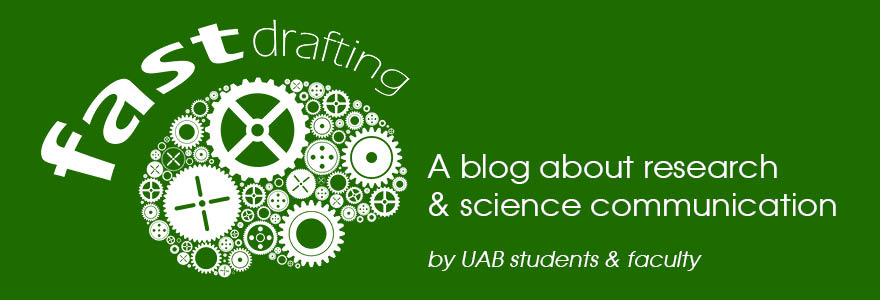Are you fed up with having elevated blood pressure and have tried
lifestyle modifications to get your blood pressure down without success? Did
you know that almost half of Americans have trouble controlling
their blood pressure despite cheap and even free well-tolerated medications
available to treat elevated blood pressure? We know that hypertension must be controlled to prevent
morbidity
and
mortality, but before the hypertension landmark trials done at Veterans Affairs Hospitals in the late 60's and early 70's,
we thought that uncontrolled blood pressure was not a problem. As the story
goes, due to our lack of knowledge about hypertension, many died from uncontrolled blood pressure, which is also called the "silent killer." For example, our president
Franklin D. Roosevelt loss his life to a stroke after suffering from uncontrolled blood pressure. Before that, Tuskegee University founder, Booker T. Washington, died from hypertension due to the
lack of treatment available.
If you have hypertension or know someone who does, I have some advice for you. But first a disclosure, I am not a medical doctor. I am a
hypertension coach. I lead the Circulation Network at the University of Alabama at Birmingham (UAB), a hypertension support
group for employees and their families. I have over four years of experience
attending in a hypertension specialty clinic, have investigated hypertension self-management
since 2008, and have over 20 years of experience as a registered nurse
specializing in cardiovascular disease and hypertension self-management. I also
have been a lead research coordinator on the landmark clinical trial, Systolic Blood Pressure
Intervention Trial (SPRINT: https://www.sprinttrial.org/public/dspHome.cfm). Most recently, I developed an effective quality improvement effort in one Patient
Aligned Care Team (PACT) at the Birmingham Veterans Administration Hospital. I am
now spreading these quality improvement efforts to other PACTs in primary care.
What I know for sure is that, for many people, blood
pressure can be controlled by routine lifestyle modifications, including a healthy diet and a regular exercise routine. If this does
not work for you, you may want to ask your doctor about well-tolerated anti-hypertensive medications that help most people manage high blood pressure. A small percentage of people have
what is called refractory hypertension, which is blood pressure that is difficult to control despite an adequate regimen of blood
pressure medication. Generally, unless you have secondary causes of
hypertension or you have refractory hypertension, you should be able to
maintain blood pressure control.
So, why. then, are so many people -- one in two hypertensive people -- walking around with uncontrolled high blood pressure? We really do not know why only about 50% of Americans who have been diagnosed with hypertension have controlled blood pressure. We do know that lack of access to prescription medication, medication costs, poor medication adherence, physician inertia, and other barriers are reasons to consider.
As a coach, I believe that not knowing your blood pressure target goal, not understanding the seriousness of the consequences of failing to maintain your target, not knowing what actions to take and when to take actions and the lack of motivation to take action might underpin those barriers. I tell my patients "You can meet your target and maintain control of your blood pressure with 5 simple tips and tricks." The tips are listed below and the tricks are in parentheses.
So, why. then, are so many people -- one in two hypertensive people -- walking around with uncontrolled high blood pressure? We really do not know why only about 50% of Americans who have been diagnosed with hypertension have controlled blood pressure. We do know that lack of access to prescription medication, medication costs, poor medication adherence, physician inertia, and other barriers are reasons to consider.
As a coach, I believe that not knowing your blood pressure target goal, not understanding the seriousness of the consequences of failing to maintain your target, not knowing what actions to take and when to take actions and the lack of motivation to take action might underpin those barriers. I tell my patients "You can meet your target and maintain control of your blood pressure with 5 simple tips and tricks." The tips are listed below and the tricks are in parentheses.
1)
Know
your BP target goal. (Ask your doctor if your target goal is 120/80 mm Hg,
135/85 mm Hg, 140/90 mm Hg, 150/90 mm Hg, or some other target goal. Your target goal may vary from that of other people you know based on your individual health profile. Maintain
your target goal, and make an appointment to see your doctor if your blood
pressure is not controlled).
2)
Understand
the seriousness of the consequences of failing to maintain your
target. (The consequences of uncontrolled blood pressure are serious, including resistant
hypertension, stroke, heart attack, kidney disease, and blindness, to name a few.
For insight, talk with someone who has had any of these complications, or talk with someone whose
family member has suffered any of these complications).
3)
Know when
to monitor your blood pressure. (The national blood pressure
guidelines recommend that most people with high blood pressure should monitor
their blood pressure at home. Ask your doctor if home blood pressure monitoring
is right for you and ask when should you monitor your blood pressure. If your blood pressure is uncontrolled, ask your doctor if your medication needs to be adjusted. According to the national hypertension guidelines, the average person will need at least 2 medications for blood pressure control).
4)
Know what
actions to take (Ask your doctor what actions to take for elevated blood
pressure, what would be a severe reading, and what actions to take for severe
readings. Take your medication as prescribed, and report any medication side effects
as soon as possible to get the most effective and most tolerated medication for
you. Join a hypertension support group to get ideas of how others cope with
hypertension. Consult a Hypertension Health Coach to work with you and your
doctor to maintain your target goal blood pressure. See links below).
5)
Know the
Life Simple 7 and adopt at least one behavior at a time (Use a health coach who has education and training
in hypertension self-management to motivate you to adapt these behaviors to maintain
blood pressure control).
Resources
1. American Heart Association:
American Heart Association backs current blood pressure treatments http://www.heart.org/HEARTORG/Conditions/HighBloodPressure/PreventionTreatmentofHighBloodPressure/American-Heart-Association-backs-current-BP-treatments_UCM_459129_Article.jsp#.VkeE4Mqz5e8.
2. American Heart Association:
Symptoms Diagnosis: Monitoring of High Blood Pressure http://www.heart.org/HEARTORG/Conditions/HighBloodPressure/SymptomsDiagnosisMonitoringofHighBloodPressure/Home-Blood-Pressure-Monitoring_UCM_301874_Article.jsp#.VkeGAcqz5e8.
3. American Heart Association: Life
Simple 7
4. Minority Health and Disparity
Research Center HealthSmart Center Hypertension Health Coach http://www.uab.edu/healthsmart/18-news-and-events/72-lower-your-high-bp
5. Publix Free Medication Program http://www.publix.com/pharmacy-wellness/pharmacy/pharmacy-services/free-medication-program
6. University of Alabama
Circulation Network Hypertension Support Group
management/circulation-network











.jpg)